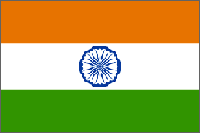|
Mangalore consists of two districts i.e. Lower Canara
(“Dakshina Kannada” in the local language) and Udupi district. Once upon a time Lower Canara was a vast district with eight Sub-districts. From August 1997 this was bifurcated into lower Canara and Udupi
districts. Lower Canara presently consists of five Sub-Districts viz. Mangalore, Bantwal, Puttur, Sullia and Belthangady where as the Udupi district consists of three Sub-Districts viz. Udupi,
Kundapur and Karkal. These two districts together are called as TULU-NADU, since the most popular language in these regions is TULU.
Lying in the Western coast and touching the Arabian Sea, Mangalore has been historically a ship building
centre. Being a strategic port, it was always under conflict in the past, thus having been under several varied dynasties. Mangalore today is a blend of the new and old. Tulu-Nadu is one of the
most enchanting places to travel. Though known for its religious places of worship, the place is blessed with green fields, water falls, beautiful beaches and with rich variety of flora and fauna.
Mangalore was named after the goddess Mangaladevi. The story goes a long way in enriching the cultural
heritage of Mangalore. Mangalore is the administrative headquarters of Lower Canara district, Southwestern Karnataka (formerly Mysore) state, Southern India, a port on the Arabian Sea. It is also
one the major ports of India. Lying on the backwaters formed by the Netravati and Gurpur rivers, it has long been a roadstead along the Malabar Coast. Engaged in Persian Gulf trade in the 14th century,
Mangalore was occupied by the Portuguese in the mid-16th century. In the 18th century its control was contested by Haidar Ali and Tipu Sultan on one hand and the British on the other.
Under the Mysore sultans (1763) it became a strategic ship building base, which was ceded to the British in 1799 after numerous sieges.
The modern port, approximately 5miles north of the town, is now Indias ninth largest cargo handling
port. Mangalores economy is dominated by agricultural processing and port-related activities. Imports include tropical timber from south-east Asia for furniture making, a necessity since India
places major restrictions on its own teak felling. The port handles 75% of Indias coffee exports and the bulk of it cashew nuts. The latter are brought from many coastal areas (notably from Kerala,
where 90% of Indias cashews are grown); the National Cashew research centre is situated near by at Puttur.
It has several famous pilgrim centres. The district is a leader in more than one way in banking, private
entrepreneur-ship and in general awareness amongst people. The city of Mangalore has given birth to four banks on the national level apart from general insurance companies. Critics call it the Cradle of
Banking Industry. It has an airport and an all-weather port and is well connected with other parts of the country. Industrialisation has crept in, in the form of the Mangalore Chemicals and Fertilizers
Limited, Kudremukh Iron Ore Company Limited, Mangalore Refinery and Petrochemicals Limited, National Thermal Power Corporation Limited, Infosys Ltd. and a host of other projects proposed for the
district, such as the power plants of Jaiprakash Industries and NTPC, downstream units of MRPL, etc.
An estimated Rs 250 Billion rupees ( Approximately 5.5 billion Dollars) is expected to be invested
in the next five years, a good deal of it in the corporate sector. The completion of the Konkan Railway project will give a further fillip to the trade and commercial activity of the region.
The tile, coffee and cashewnut factories are a unique sight limited to the whereabouts of this coastal town. The St. Aloysius Chapel with its 100
years old paintings, Shrimati Bai Memorial Museum, Beedi Factories, historical temples, historical forts, Saib Mosque and Music Gallery is worth watching.
A trip to Mangalore is incomplete without watching the Classic Yakshagana - an elaborate dance - drama performance unique to Karnataka. A night-long event, with people adorned vibrantly, and dancing to the beat of drums, Yakshagana performance attracts thousands of people.
Hulivesha (Tiger dance) is a unique form of folk dance in Dakshina kannada that fascinates the young and the old
alike. Since tiger is considered as the favored carrier of Goddess Sharada (the deity in whose honor Dussera is celebrated), this dance is performed during the Dussera celebration. It is also performed
during other festivals like Krishna Janmasthami.
|



